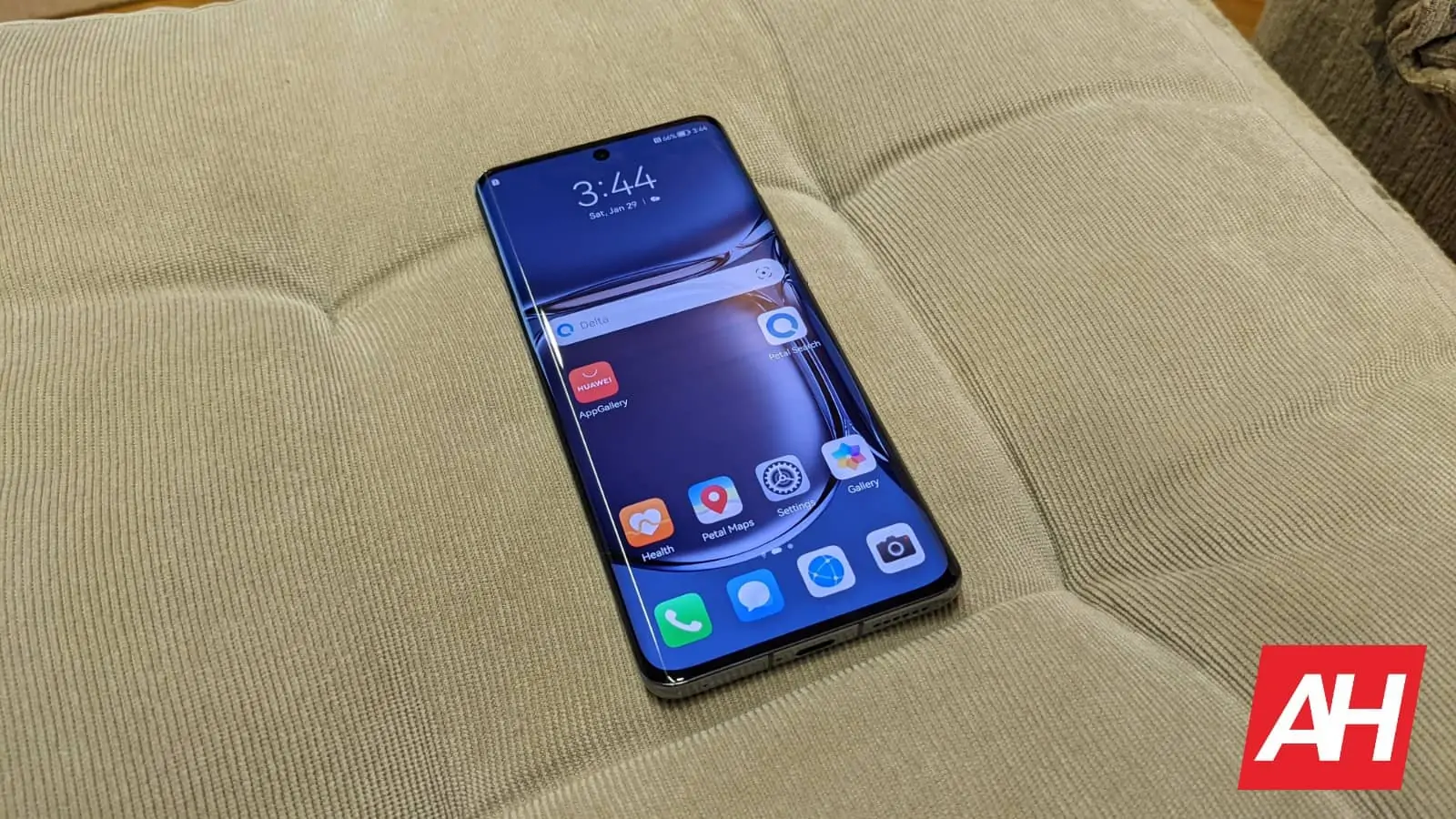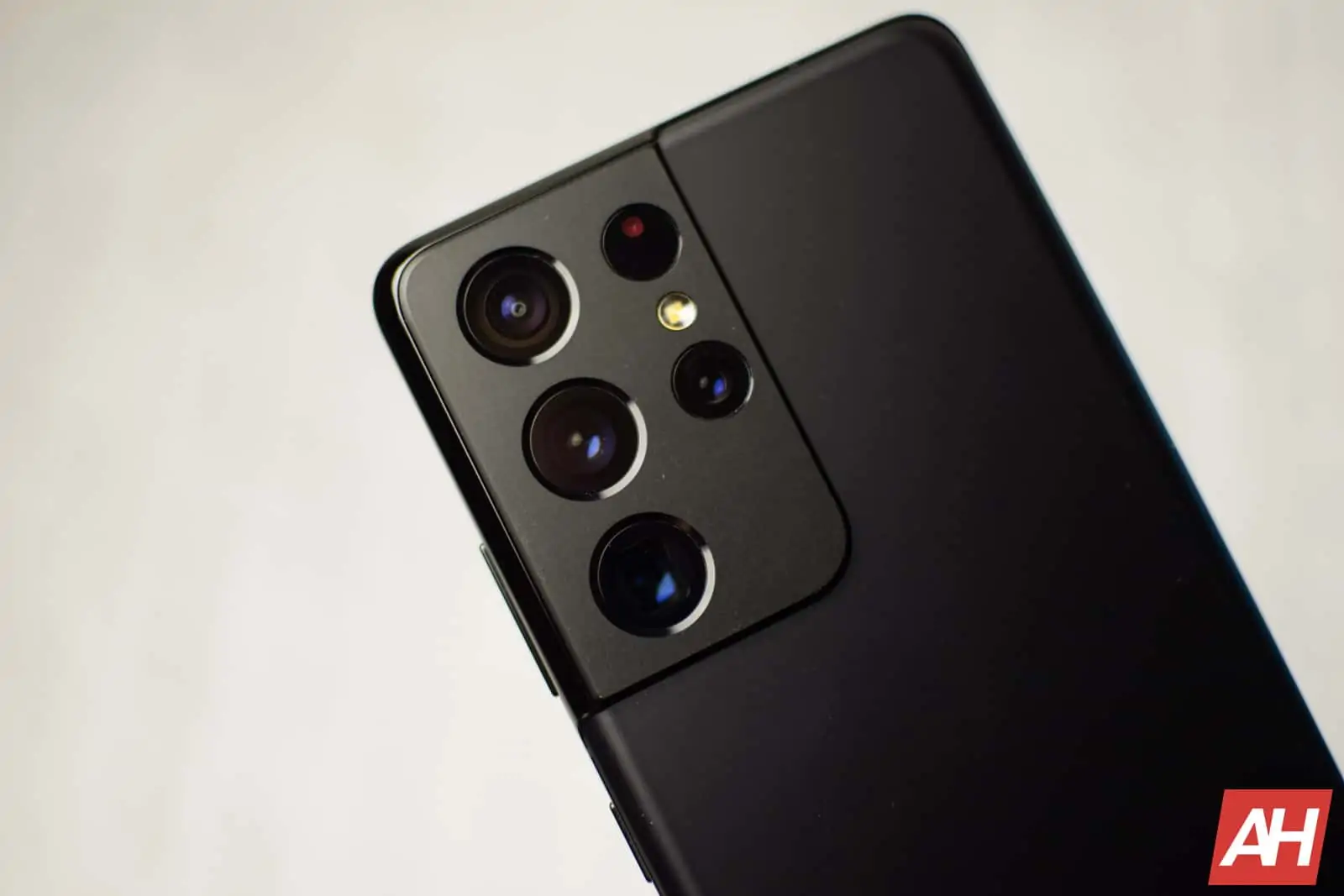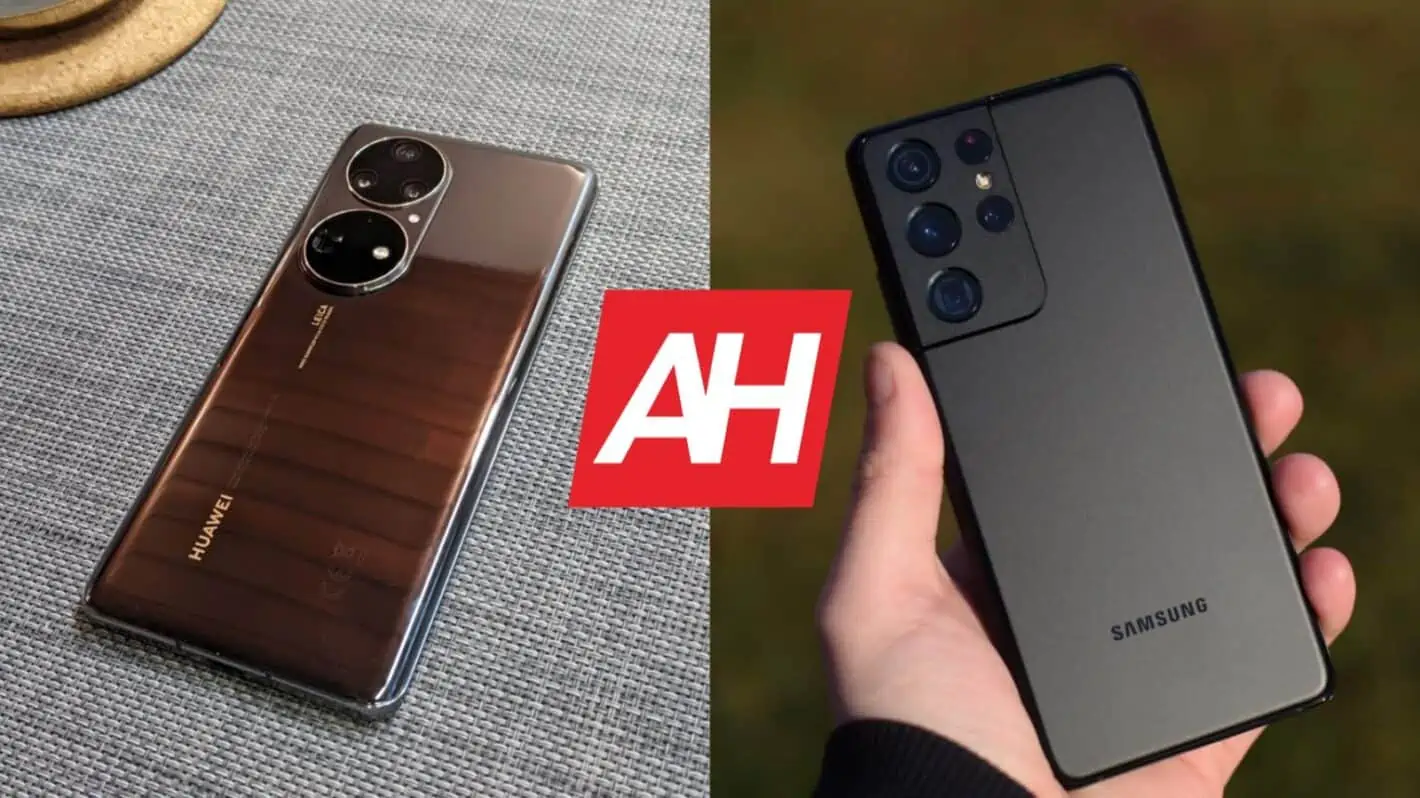The global variant of the Huawei P50 Pro launched quite recently, and we decided to compare it with the best Samsung has to offer at the moment. In this article, we’ll compare the Huawei P50 Pro vs Samsung Galaxy S21 Ultra. Truth be said, the Galaxy S22 series is right around the corner, but the Huawei P50 Pro originally launched in China in mid-2021. The global variant is a bit different, but still, this seems like a fair comparison. We’ll, of course, pit the Huawei P50 Pro vs the Galaxy S22 Ultra when it launches as well.
These two smartphones do have some things in common, but for the most part, they’re quite different. Even their design is quite a bit different, with some slight similarities. We’ll kick things off by listing their specifications, and will then move to the design, display, performance, battery, camera, and audio sections. Before we start, do note that the Huawei P50 Pro doesn’t come with Google Services out of the box. That being said, let’s kick off the Huawei P50 Pro vs Samsung Galaxy S21 Ultra comparison.
Specs
| Huawei P50 Pro | Samsung Galaxy S21 Ultra | |
| Screen size | 6.6-inch QHD+ OLED display (120Hz) | 6.8-inch WQHD+ Dynamic AMOLED 2X curved display (120Hz adaptive refresh rate) |
| Screen resolution | 2700 x 1228 | 3200 x 1440 |
| SoC | Qualcomm Snapdragon 888 | Qualcomm Snapdragon 888 / Samsung Exynos 2100 |
| RAM | 8GB (LPDDR5) | 12GB/16GB (LPDDR5) |
| Storage | 256GB (UFS 3.1), non-expandable | 128GB/256GB, non-expandable (expandable in some countries) |
| Rear cameras | 50MP (f/1.8 aperture, OIS, Laser AF, PDAF, 23mm lens) 13MP (f/2.2 aperture, AF, 13mm lens, ultrawide) 40MP (f/1.6 aperture, 23mm, monochrome) 64MP (f/3.5 aperture, 90mm lens, OIS, PDAF, periscope, 3.5x optical, 7x lossless) Leica lenses on all cameras |
108MP (f/1.8 aperture, OIS, 0.8um pixel size. Produces 12MP images with 2.4um pixel size) 12MP (ultrawide, Dual Pixel AF, 120-degree FoV, f/2.2 aperture, 1.4um pixel size) 10MP (telephoto, Dual Pixel AF, OIS, f/2.4 aperture, 1.22um pixel size, optical zoom 3x) 10MP (telephoto, Dual Pixel AF, OIS, f/4.9 aperture, 1.22um pixel size, 10x optical zoom, 100x Space Zoom) |
| Front cameras | 13MP (f/2.4 aperture, wide, AF) | 40MP (f/2.2 aperture, 80-degree FoV, 0.7um pixel size, PDAF) |
| Battery | 4,360mAh, non-removable, 66W fast battery charging, 50W wireless charging | 5,000mAh, non-removable, fast battery charging (USB PD 3.0), Fast Wireless Charging 2.0, Wireless PowerShare |
| Dimensions | 158.8 x 72.8 x 8.5mm | 165 x 75.6 x 8.9 mm |
| Weight | 195 grams | 227/229 grams |
| Connectivity | 4G, LTE, NFC, Bluetooth 5.2, Wi-Fi, USB Type-C | 5G, LTE, NFC, Bluetooth 5.2, Wi-Fi, USB Type-C |
| Security | In-display fingerprint scanner (optical) | In-display fingerprint scanner (ultrasonic) |
| OS | Android 11 EMUI 12 |
Android 11 (upgradeable to Android 12) One UI 3.0 |
| Price | €1,199 ($1,353) | $1,199.99 |
| Buy | Huawei | Samsung |
Huawei P50 Pro vs Samsung Galaxy S21 Ultra: Design
From the front, the two phones do look quite similar, though the Galaxy S21 Ultra is noticeably larger. Both phones have really thin bezels, a curved display, and a centered display camera hole. Even their shape is similar, as both offer curved corners, and even the curve is similar. That being said, the curve of the displays is a bit different, and both devices have physical buttons on the right-hand side.
The Galaxy S21 Ultra is considerably taller, and narrower than the Huawei P50 Pro, while it’s also a bit thicker. Samsung’s flagship is also a lot heavier in comparison, its Sub6 5G model weighs 227 grams, while the mmWave variant weighs 229 grams. The Huawei P50 Pro, in comparison, weighs only 195 grams. It does have a slightly smaller display, though, but we’ll talk more about that in the section.
The camera setup on the back looks quite a bit different. The Huawei P50 Pro has two circular cutouts, both of which include cameras and sensors. The Galaxy S21 Ultra, on the other hand, has five distinct sensors on the back, which are a part of a metal enclosure that protrudes from the side. Both phones are made out of metal and glass, and are quite slippery, so using a case may not be a bad idea. The Huawei P50 Pro is considerably easier to use with one hand, due to its smaller size, and the fact it weighs less. The weight distribution is good on both phones, though the Galaxy S21 Ultra has a bit more weight in the top section, at least it feels that way.
Huawei P50 Pro vs Samsung Galaxy S21 Ultra: Display
The Huawei P50 Pro features a 6.6-inch QHD+ (2700 x 1228) OLED display. That display offers a 120Hz refresh rate, and it can project 1 billion colors. We’re looking at a PPI of around 450 here. The display is also curved. The Galaxy S21 Ultra, on the other hand, has a 6.8-inch QHD+ (3200 x 1440) Dynamic AMOLED 2X display. This panel is also curved, and it also offers a 120Hz refresh rate (adaptable). It supports HDR10+ content, and it’s protected by the Gorilla Glass Victus. This panel gets really bright at 1,500 nits of peak brightness. We’re looking at a PPI of around 515 here.

The curve on the Huawei P50 Pro’s panel is more pronounced, by the way. Both displays are very smooth, and very responsive. They also look excellent, and you won’t notice the difference in sharpness. The Galaxy S21 Ultra’s panel is technically sharper, but that’s not something you’ll notice during your usage, as both are immensely sharp. They’re also very vivid, with deep blacks, and excellent viewing angles.
Both displays get more than bright enough in all conditions, though the Galaxy S21 Ultra’s panel can technically get a bit brighter. What I’m trying to say is, both of these panels are truly great, and you can’t go wrong with either one. You’ll enjoy them immensely, regardless of which one you end up choosing. The differences are not that big at all, and you can even further tweak the output in the settings. Both companies have some added settings you can play around with, to tweak the display just right.
Huawei P50 Pro vs Samsung Galaxy S21 Ultra: Performance
The Huawei P50 Pro is fueled by the Snapdragon 888 SoC, though it doesn’t support 5G. The Galaxy S21 Ultra comes in both Snapdragon 888 and Exynos 2100 flavors, and both support 5G. That being said, both phones are equipped with LPDDR5 RAM and UFS 3.1 flash storage. The Huawei P50 Pro comes with 8GB of RAM and 256GB of storage. The Galaxy S21 Ultra, on the flip side, includes 12GB of RAM and several storage options.
How does that reflect on performance, though? Well, in combination with EMUI and One UI that come pre-installed on top of Android, it results in excellent performance on both phones. We really didn’t notice any lag during our usage, only some hiccups when really pushing the phones, though that is the case with every device. They performed as smooth as butter, regardless of what we did at the time.
When it comes to regular, everyday performance, they simply blast through anything. Both phones launch apps really quickly, and the same goes for general performance. Multimedia consumption is a joy on both, as is taking pictures, videos, browsing the web, and so on. Even if you like gaming on your smartphone, both of these are excellent choices. Their displays are large enough, and they’re more than powerful to handle games.
Huawei P50 Pro vs Samsung Galaxy S21 Ultra: Battery
The Huawei P50 Pro includes a 4,360mAh battery. The Galaxy S21 Ultra ships with a 5,000mAh unit. Samsung’s flagship does have a larger display, which also offers higher resolution, so the battery capacity difference makes sense. Is the battery life any good on the two devices, though? Well, yes, it is. The Galaxy S21 Ultra performed a bit better, at least in our testing.
On most days, getting over 6, 6 and a half hours of screen-on-time on the Galaxy S21 Ultra wasn’t a problem. The Huawei P50 Pro wasn’t bad either, with around 6 hours of screen-on-time on most days. The Galaxy S21 Ultra was usually left with more battery life with similar usage, at the end of the day, though the difference wasn’t major. Do note that your experience may differ quite a bit. That is the case with every phone, of course. You will have different conditions than us, including your usage, cell reception, daily routine, installed apps, and so on.
The Huawei P50 Pro does beat the Galaxy S21 Ultra in the charging department, though. The phone offers 66W wired charging, and 50W wireless charging. The Galaxy S21 Ultra, on the other hand, has support for 25W wired charging, and 15W wireless charging. 5W reverse wireless charging is also supported, though Samsung calls it ‘Wireless PowerShare’. The Huawei P50 Pro even ships with a 66W charging brick, while the Galaxy S21 Ultra doesn’t include a charging brick at all.
Huawei P50 Pro vs Samsung Galaxy S21 Ultra: Cameras
Huawei and Samsung flagships rarely drop the ball when it comes to camera performance, and the same is the case here. Both phones have really powerful camera hardware, though fairly different. Their software is different, and the images as well, but both provide excellent results. During the day, both phones provide extremely detailed, and well-balanced shots. The Galaxy S21 Ultra images do seem a bit more processed, though not by much. Both phones handle extreme dynamic range situations with ease, and the colors they provide are really nice. The Galaxy S21 Ultra does tend up to boost saturation a bit too much sometimes, though.

When the light goes away, well, the camera performance doesn’t exactly diminish. Both devices do a great job in such conditions, and both include a night mode. Do note that both phones can automatically recognize when you’re in such conditions, so you probably won’t even have to reach for the night mode. Both phones allow plenty of light to enter a scene, though the noise is lower on the Huawei P50 Pro. Not by much, but it is. Both do a great job at preserving details in such conditions, and balancing light flares as well. They also preserve nice colors.
Ultrawide cameras are good on both phones, though the Huawei P50 Pro’s remains more consistent with the main camera sensor. Telephoto images turn out great on both phones, and both devices offer periscope cameras for really nice zoomed-in images. Do note that those periscope cameras are not particularly useful in low light situations, though. The video quality is great on both devices, with good stabilization, and generally excellent footage. They’re amongst the best Android phones in that regard, for sure, and the same goes for still images.
Audio
Both the Huawei P50 Pro and Samsung Galaxy S21 Ultra include stereo speakers. They both have a bottom-firing main speaker. The secondary speaker on the Huawei P50 Pro is up-firing, it sits at the top of the device. The Galaxy S21 Ultra, on the other hand, has a front-firing secondary speaker. Truth be said, both setups are really good, and provide rich audio. We do prefer the front-firing secondary speaker, though, as it’s not easy to cover with a hand.
A 3.5mm headphone jack is not included on either of these two phones. You’ll either have to use the Type-C USB port to connect your headphones, or simply connect them via Bluetooth. Either way, you can get good sound output.

